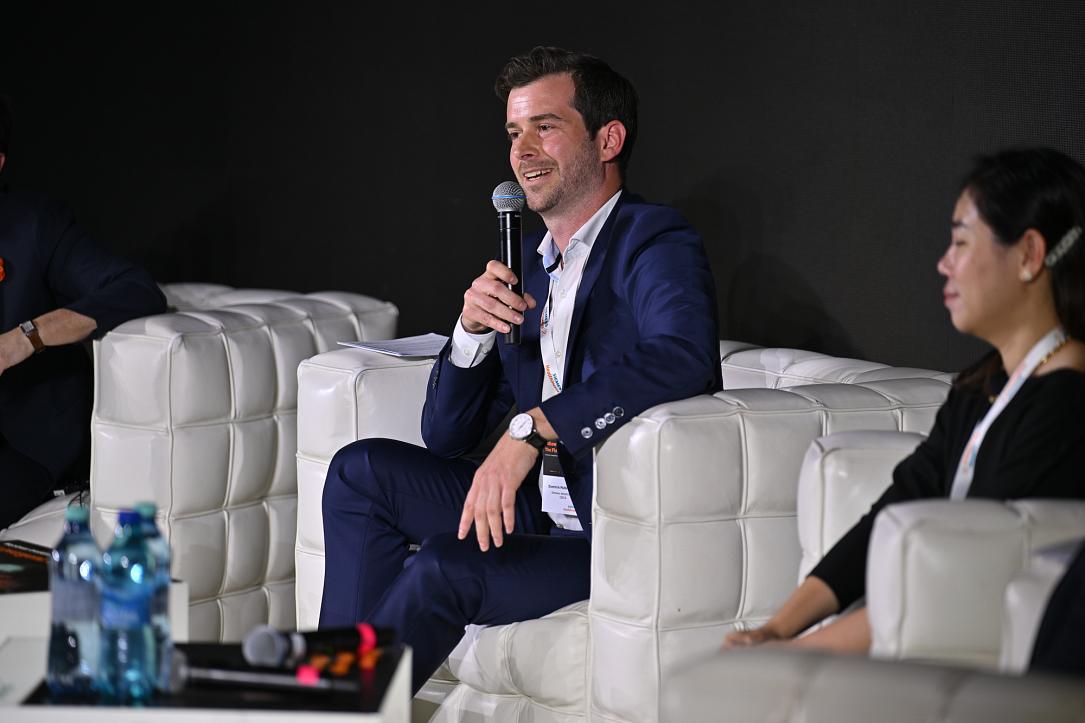Dominik Panwinkler, business line manager CEECA at Siemens Healthineers: The future of MRI imaging hinges on scanners that can be used anywhere, by anyone



Following the international launch in Vienna at the beginning of February, the cutting-edge MAGNETOM Flow scanner will be installed at the Dorna Medical Clinic in Borșa, Maramures, in June 2024.
Prominent figures from national and international medical, scientific, and educational fields were present at the launch event, which also marked 40 years of MAGNETOM technology excellence.
During the second panel, Panwinkler noted that MRI technology is relatively young, the first scan being done only 40 years ago. The first machines took two hours for a single scan, and access to it was severely limited. After that, the pace of innovation in the sector quickened, and machines got smaller and better. While patients had to adapt to MRI machines in the past, nowadays, the reverse is true, thanks to state-of-the-line sensors and AI such as those used by the MAGNETOM Flow.
Panwinkler also argued that the future of MRI imaging hinges on plug-and-play scanners, which can be used anywhere, by anyone. He sat down with Romania Insider to answer more questions about the recently unveiled scanner.
How is the MAGNETOM Flow different from other systems?
There are a lot of similarities between some of our recent scanners, like the MAGNETOM Free.Star, and the MAGNETOM Flow, but the difference consists of the strength of the field. We introduced the MAGNETOM Free.Star with the 0.55 Tesla field, now this machine has 1.5 Tesla. But there are a lot of similarities because we learned a lot from the MAGNETOM Free.Star, and we improved it.
How long does the training of an operator for the MAGNETOM Flow take?
It depends. A brand-new user of the MAGNETOM Flow scanner can learn to operate it through a hybrid learning approach. The first part is done virtually, and once the system is installed, Siemens Healthineers specialists join the staff for 2-3 days to conduct on-site training. Operators already familiar with Siemens MRI scanners will need no training. What is now fully new is that everyone can operate the MRI. Even somebody who has no clue. We have different training modes, and the MRI itself is providing the strategy.
Previous models also incorporated intelligent imaging technology like the myExam Companion technology. Does the MAGNETOM Flow also have these features?
It has everything that past models have, and it also uses AI. We see that is the future. We have these myExam strategies to help streamline the operations and for sure, AI. The latter is having the biggest impact at the moment, and therefore the MAGNETOM Flow system is fully equipped with AI.
There were slightly over 200 MRI machines in Romania in 2022. The figure jumped to around 298 in 2023, and today clinics and hospitals in the country house roughly 380 such machines. Can you explain this growth?
Romania is one of the biggest investors in such machines regionally. This huge growth surprises me because it was not happening 5 years ago. It was a little bit stable, but nowadays, it is exploding. It was driven by the pandemic, but back then, the focus was on CT machines. What we see now is a saturation in the CT market, so everyone is searching for different modalities, and that is where MR technology comes in. But there are still ways to go, because some users are afraid of MR technology because of how complex it is. Siemens’s simplified new systems come to remedy that issue.
The southern counties of Romania do the lowest number of MRI scans. Can the MAGNETOM Flow be fitted into a container, like the MAGNETOM Free.Star system, and transported where it is needed?
We cooperate with container-making companies, so what we can do is bring the MRI in a container on a truck. That way, we can bring it everywhere. It can travel. So, the solution is there, but there is no market demand for that in Romania yet. The UK, the Netherlands, and the US buy a lot of these mobile scanners, but they are not in demand in central and eastern Europe at the moment.”
Is the new scanner more energy-efficient?
That is one of the areas where we worked a lot because, during the pandemic, a lot of customers were approaching us saying that their energy costs were exploding. We worked on this a lot. The new system does not use helium, and AI technology allows it to be used more efficiently, also increasing the number of scans that can be done. We also have a power-efficiency mode. When the system is not working due to the lack of patients, it can shut down and go into low energy consumption levels. The scanner also has sequences where it does not need that much energy, which again lowers energy costs.
*This Healthcare Trends article is supported by Siemens Healthineers.